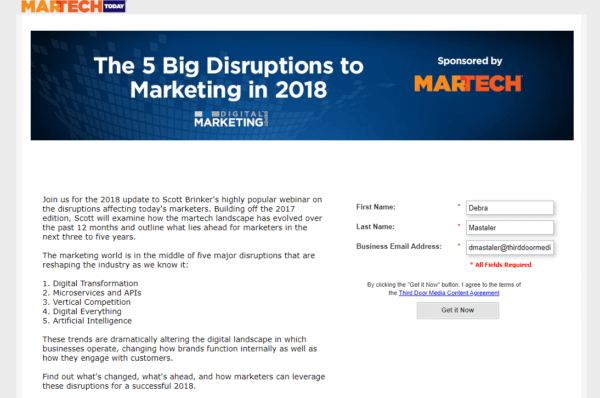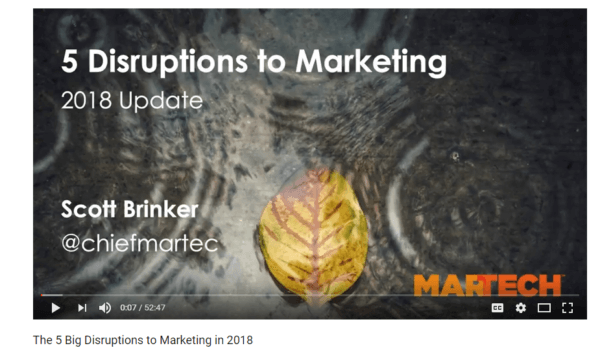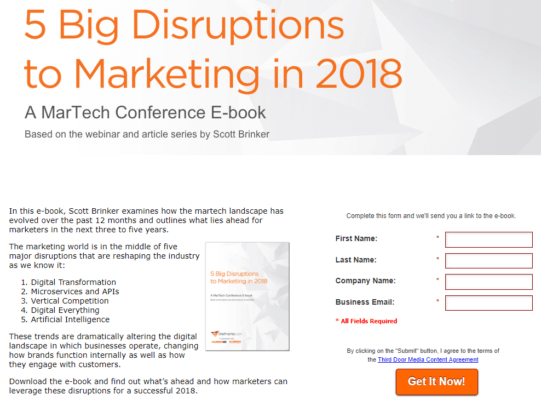 Creating large amounts of valuable content is a universal challenge for marketers.
Creating large amounts of valuable content is a universal challenge for marketers.
Doesn’t matter if we’re talking about images, articles, blog posts or videos. Producing large quantities sometimes causes a decrease in quality if a marketing department isn’t diligent.
It’s generally agreed that quality is more important than quantity when it comes to content, but it never hurts to have both if possible.
One excellent way to publish frequent, high-value content is to create webinars. Once a webinar has been produced, your creative team can repurpose and optimize it into several pieces of valuable content.
Let’s take a look at the process and ways to break a single webinar into multiple pieces of quality content that can be used to support your search engine optimization (SEO) and link-building efforts.
Built-in quality
A primary advantage of using a webinar to create more content is that quality is already “built in.” If the webinar is full of valuable, informative topics presented by knowledgeable experts, the content stemming from the webinar will also be valuable.
If your business has never created webinars and then created several pieces content from it, don’t let this stop you. It’s true that a lot of planning and effort goes into a program like this, but with the right tools and platforms, it won’t take long for you to master the process.
Getting started
First, you’ll need to store your webinars and organize your newly created content associated with each webinar.
Fortunately for entrepreneurs and small businesses, storage isn’t expensive. If you’re not already using Dropbox, OneDrive or Google Drive, this is a good time to choose one of these cloud-storage platforms. They are also good for file sharing and easy collaboration among your team.
Next, select a webinar platform that fits your business’s needs. There are many to choose from: Search on the phrase “webinar software” and you’ll find long lists of software. Platforms range from expensive and technical to low-cost and user-friendly.
If you don’t have an enterprise-level budget or large technical teams, you’ll obviously want to avoid costly platforms that require major technical skills. One platform that’s received high ratings for ease of use and low cost is ClickMeeting. But with any business solution, the key is to pinpoint the software that works best for your team.
If you have a library of webinars waiting to be dusted off or you need to create webinars from scratch, here are seven effective ways to turn them into multiple kinds of quality content and link bait.
1. Convert webinars into full-length videos
Once your webinar has been completed, consider hosting it as a full-length video directly on your website. Simply add a title card at the beginning and an ending card at the close. Then make sure it’s accessible only in exchange for the viewers’ email addresses. This is an excellent way to offer valuable content while building your email list at the same time.


On the signup page, to access your webinar video, you can also display a check box for visitors to select if they want to receive your newsletter or other research. Just make sure to ask them first. You want to be known as a thought leader in your industry, not a spammer.
After the video of your webinar has been utilized to build your email list for a few months (or as long as you’d like,) you can then freely post the videos to YouTube or Vimeo.
2. Chop your webinars into short clips for market messaging
Not many people have an hour to sit through an entire webinar without planning ahead of time. But people will certainly devote three or four minutes to a short video clip if it provides them with information they find valuable. This is where webinar chopping becomes beneficial.
Dividing your webinars into several one- to three-minute segments will produce videos that are usable for many purposes.
First, use them as thought-leadership clips for social media posts. If they touch on sought-after topics in your industry, and if they’re presented in a way that grabs attention, they’ll most likely be shared by your audience.
You can also use these short video clips in email campaigns as a way to drive people to content on your blog or website:

They can be excellent tools for lead generation or lead nurturing, and you can incorporate them into email drip campaigns. Further, consider using them as added bits of value in your monthly newsletters.
3. Create several blog posts based on your webinars
It’s never easy to fill your content calendar with relevant blog topics, but companies who produce frequent webinars have a much easier time with this challenge.
Smart marketers turn subsections of their webinars into several meaningful blog posts. The parts of the webinar that garner a significant number of questions and interactions make for excellent blogging material.

If your writing team is strapped for time, the presenter or another panelist on your webinar might be willing to write a post or two based the most well-received webinar sections. He or she could then submit the posts as a guest blogger on your blog. Guest posts could add to the presenter’s personal brand and authority on the topic, so they might be happy to do it.
4. Create authoritative Q&A content
One advantage of webinars is that they provide chat logs of text conversations among your audience. These conversations often reveal thoughtful questions. Armed with the knowledge of actual questions presented by people in your industry, you can now create informative question and answer (Q&A) content that will really get attention.
Answering real questions in your content is highly beneficial because it sets your brand up as an authority in your field. If you can create “eureka moments” in the minds of your readers and viewers, your company will be viewed as a trusted source of expertise.
Your Q&A content can come in the form of a video series, Q&A articles submitted to industry journals, blog posts, email content, infographics or any other format you can think of.
5. Use your webinar’s slides to create infographics
Your webinars can become a rich source of attractive infographics and images. One element of a great infographic is highlighting a solution to a common problem. So if your webinar is of the problem-solving variety, you’re probably sitting on an infographic goldmine.
6. Create transcripts for SEO and new content
As popular as videos and webinars are in today’s digital landscape, they have a major limitation when it comes to SEO: The content in audio files and video is non-detectable to search engine crawlers.
When a company produces frequent webinars, it’s a shame for all their high-quality audio to stay invisible to search engines.
Having your webinars transcribed into text using a tool like SpeechPad is a great solution. You can then offer the transcripts as search-optimized blog posts. Further, when you have transcripts of your webinar content, you’ll find that it’s much easier to turn your webinars into blog posts, e-books, white papers and other content formats.

7. Use your webinar content as trade show presentations
Trade shows and industry conferences are ideal for authority building. And because you’ve already conducted a webinar, you should have all the notes and presentation materials needed to speak at such events.
Plus, because you know the material, and you’ve recently delivered it in a webinar format, you’ve already had a dress rehearsal for the role of a trade show presenter.
Presenting at an event can lead to further video content for your business, so make sure your presentation is being recorded.
A successful webinar is only the first step
Webinars are usually thought of as an effective tactic for demand generation, but their value doesn’t end there.
Consider a successful webinar as just the beginning of an ongoing stream of reworkable content. Make sure your webinars are integrated into your overall content marketing strategy, and before long, your brand will become a content marketing machine that your competitors won’t be able to keep up with.
The post 7 ways to turn a webinar into a stream of link-attracting content appeared first on Search Engine Land.
No comments:
Post a Comment